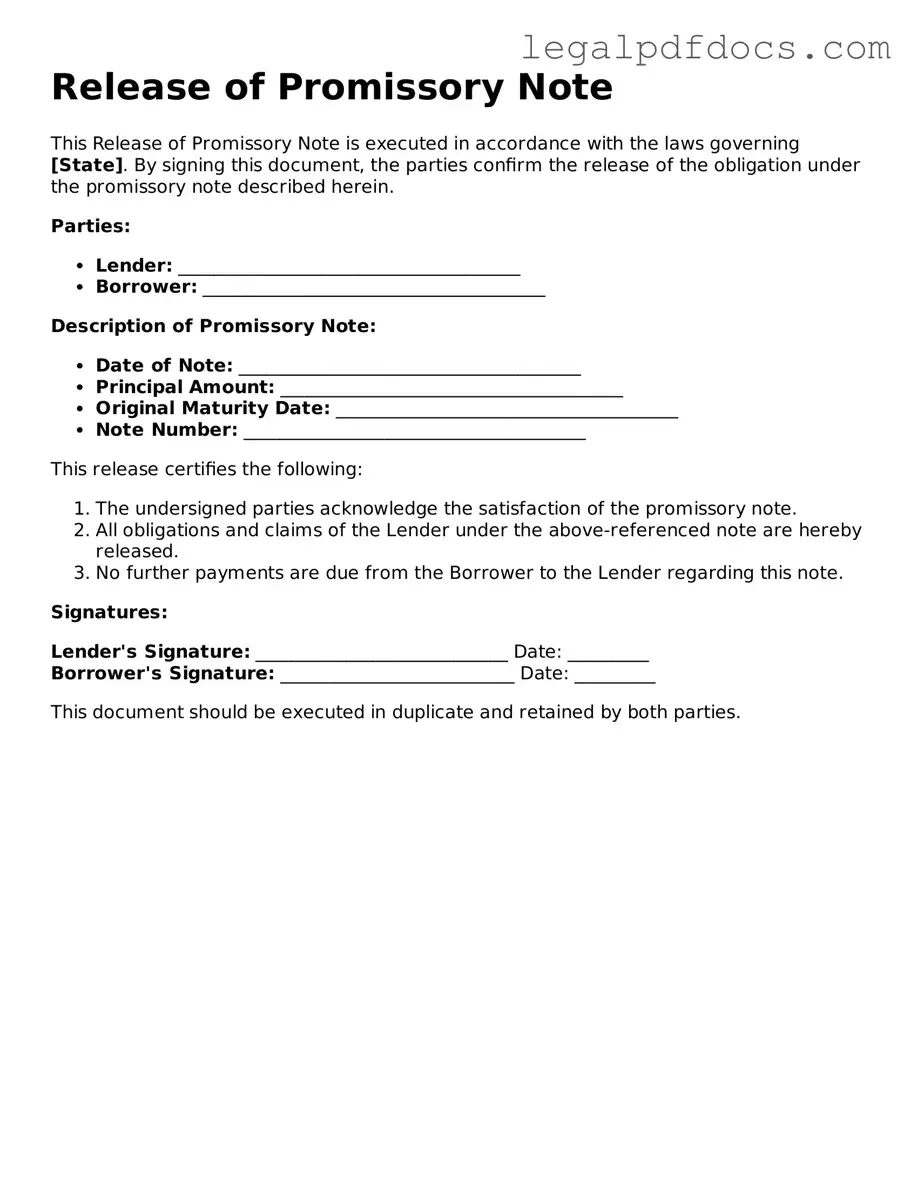The Release of Promissory Note form serves as a vital document in the realm of financial transactions, particularly in the context of loans and debts. This form signifies the completion of a loan agreement, indicating that the borrower has fulfilled their obligations and that the lender acknowledges this fulfillment. By executing this release, both parties can ensure that the debt is officially settled, eliminating any future claims related to the promissory note. The form typically includes essential details such as the names of the borrower and lender, the original amount of the loan, and the date of repayment. Additionally, it may contain a statement affirming that the lender relinquishes any rights to collect on the note, thereby providing peace of mind to the borrower. Clarity in the language and structure of this document is crucial, as it serves not only as a record of the transaction but also as a safeguard against potential disputes. Understanding the nuances of this form is essential for anyone involved in lending or borrowing, as it encapsulates the conclusion of a financial relationship and the mutual agreement to move forward without further obligations.
